
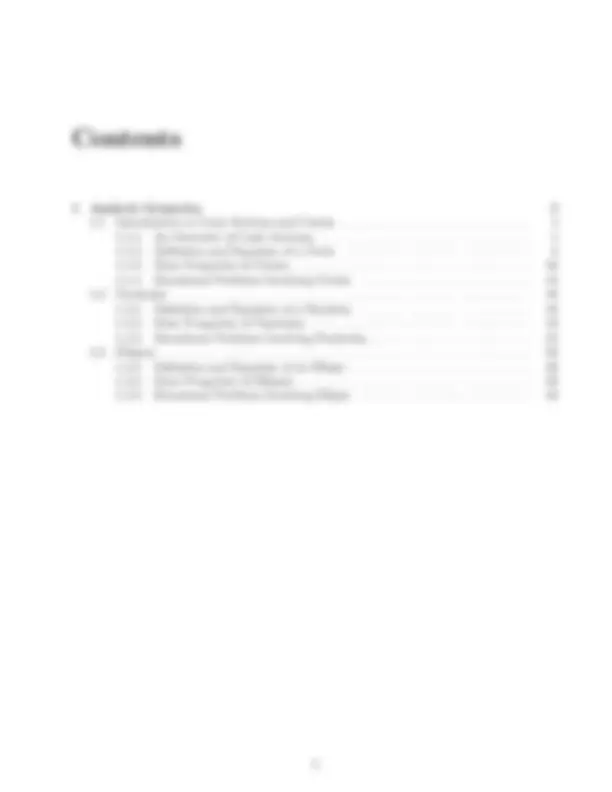

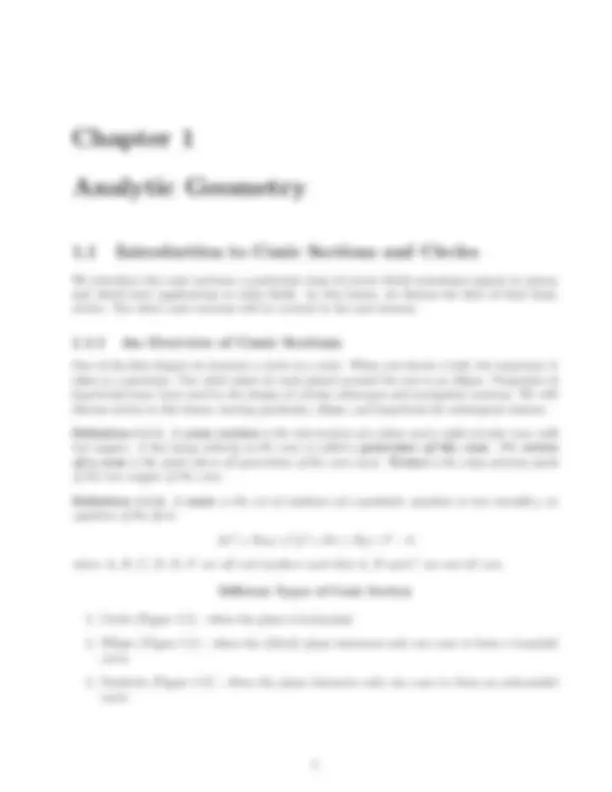
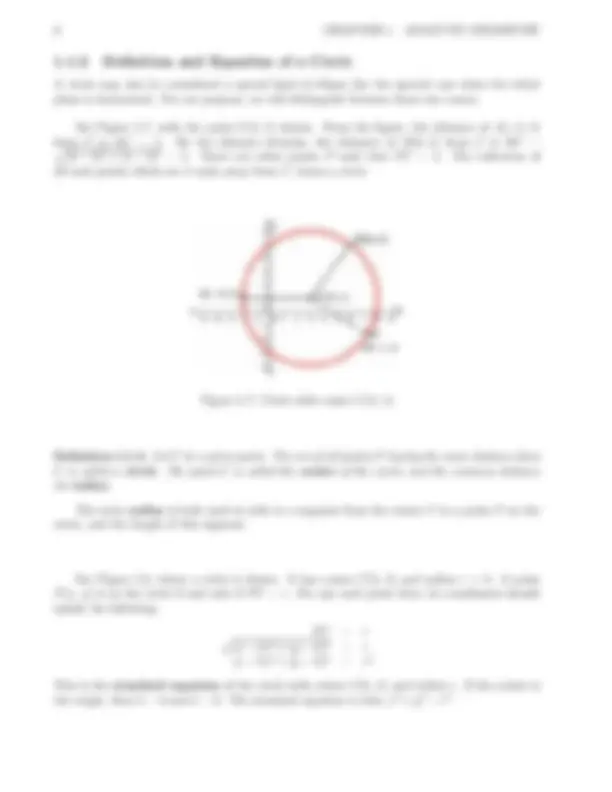
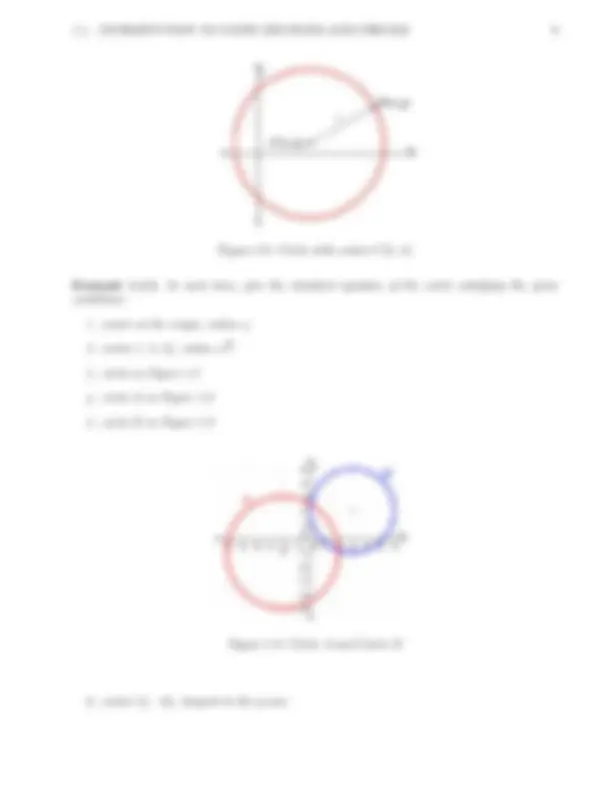

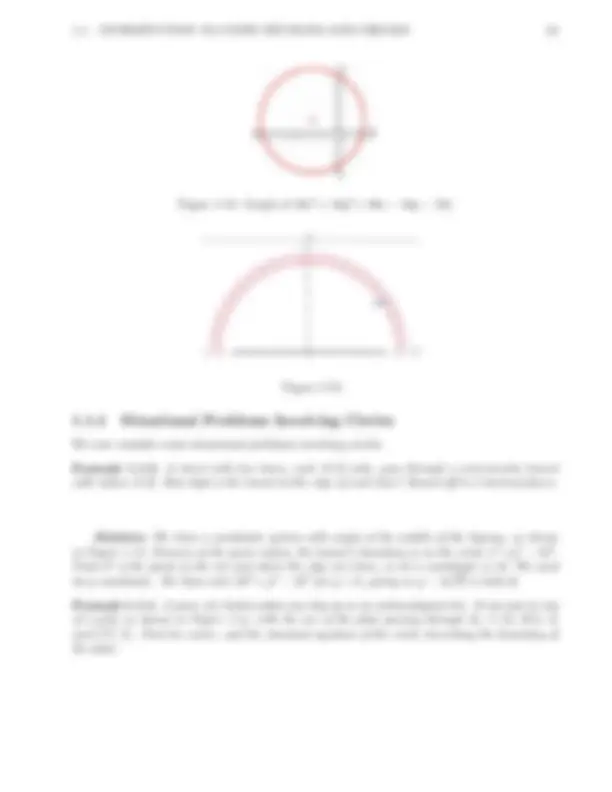
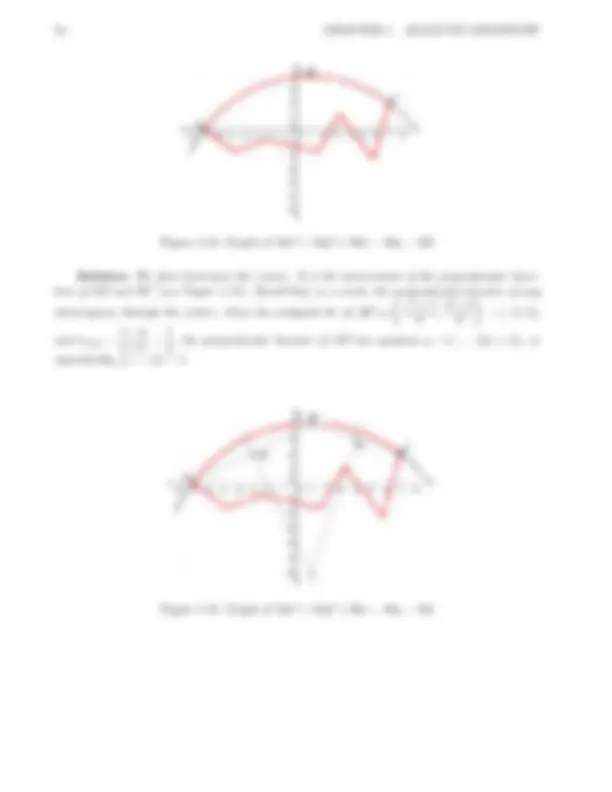
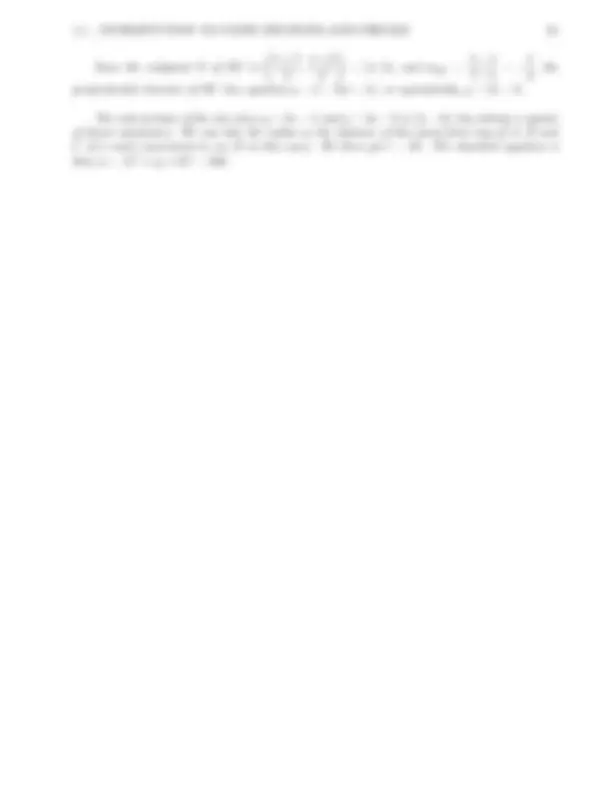
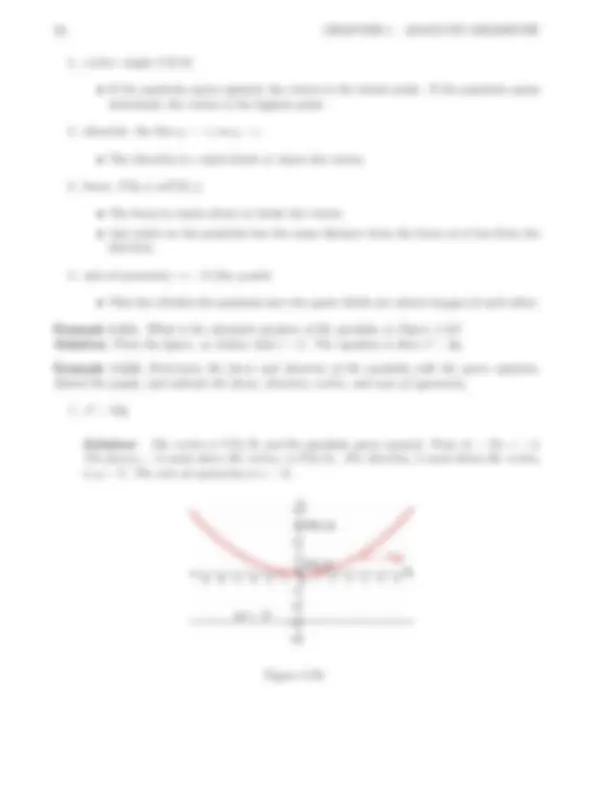
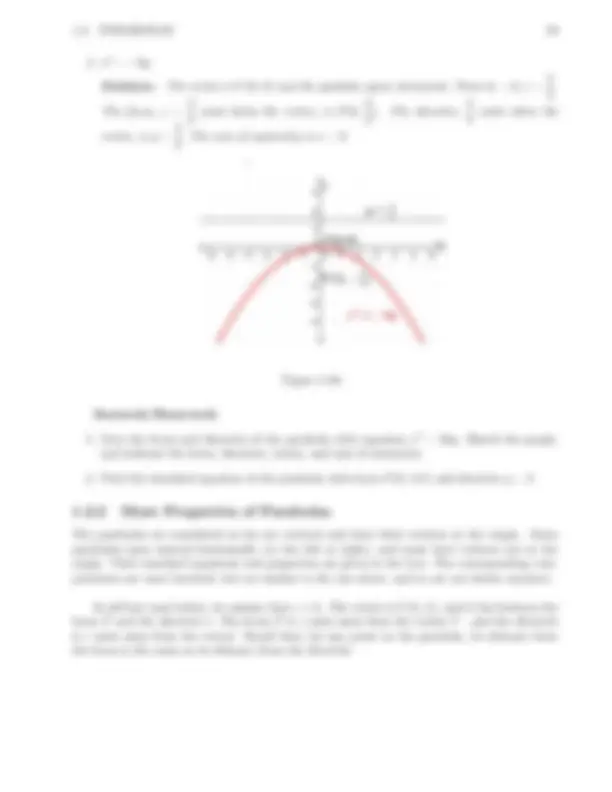
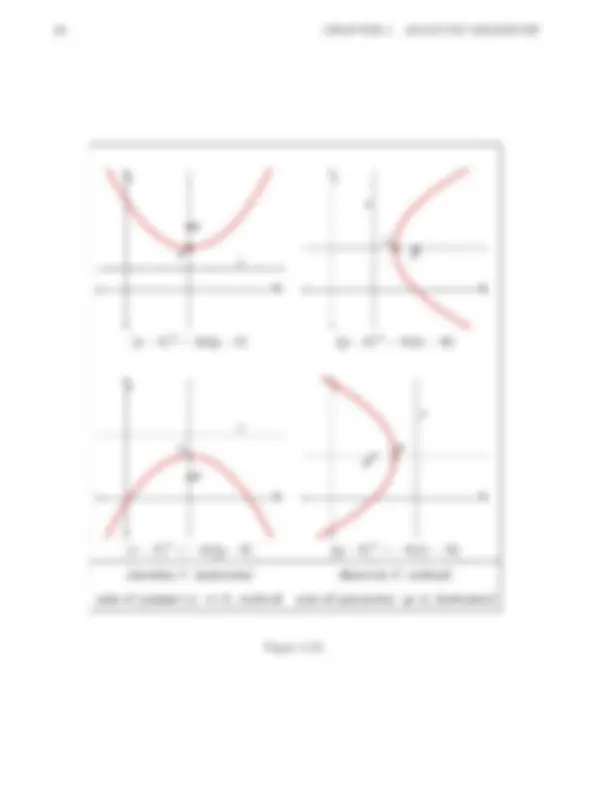
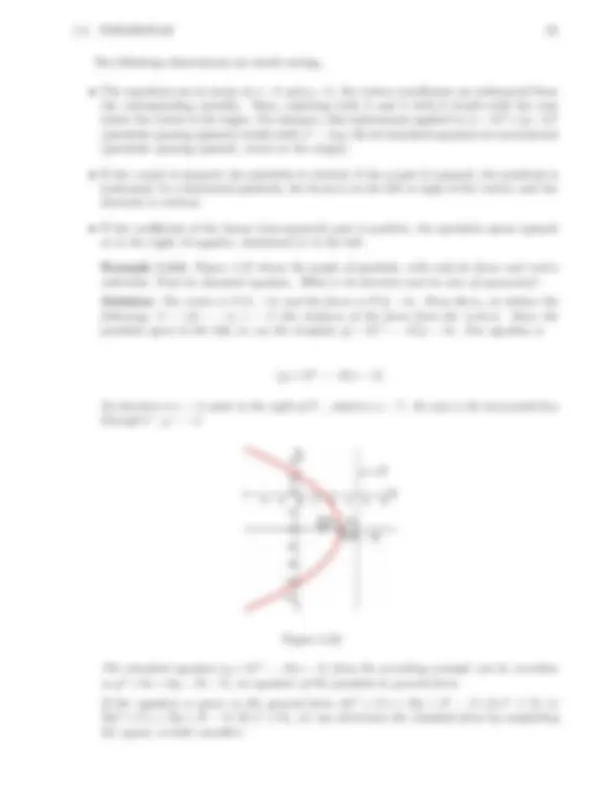
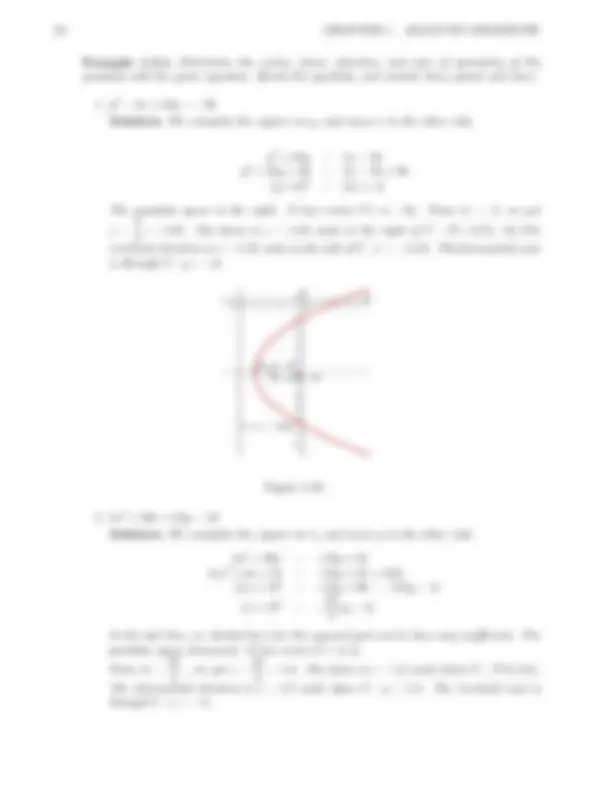
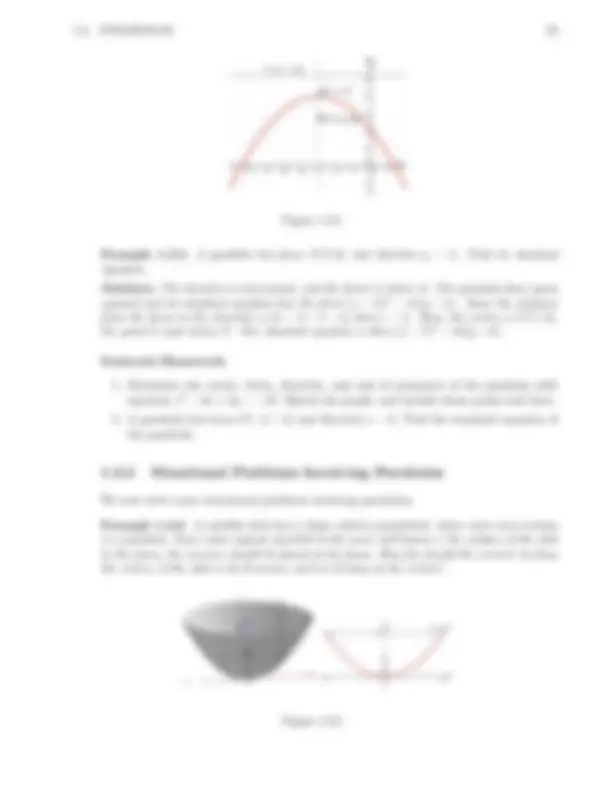
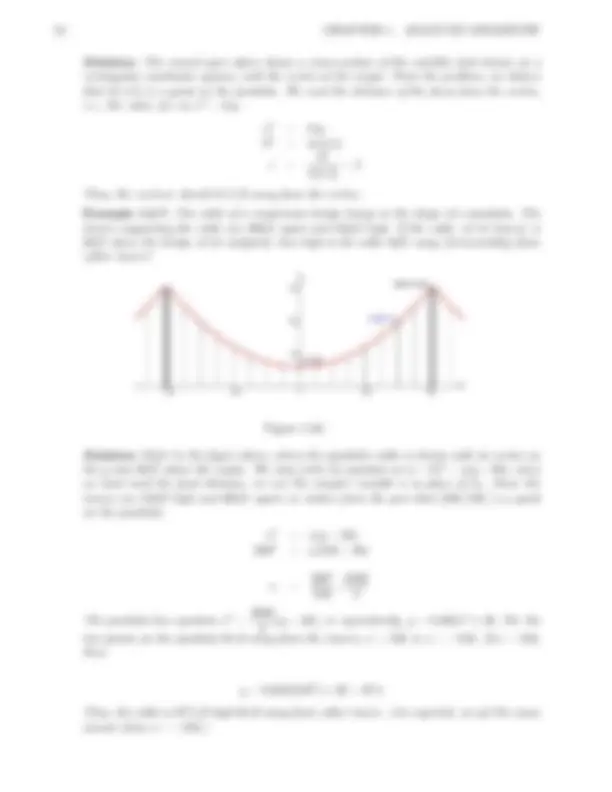

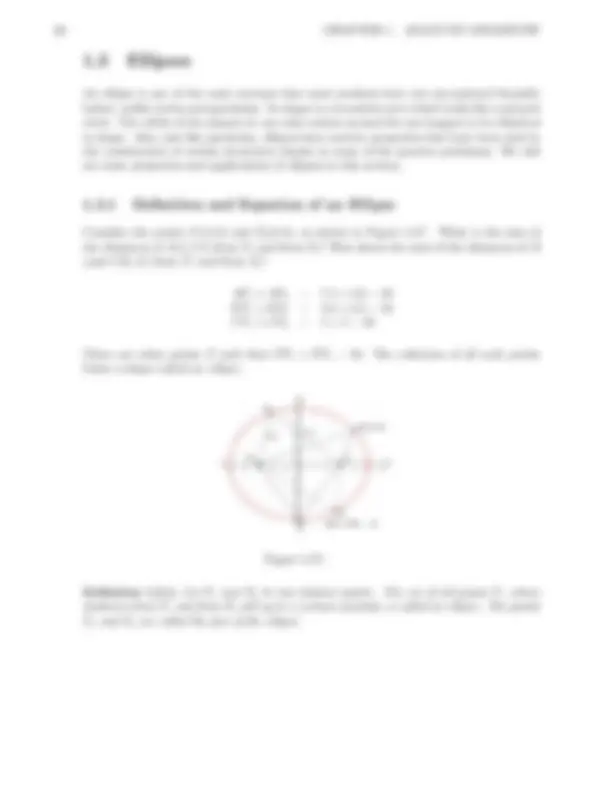
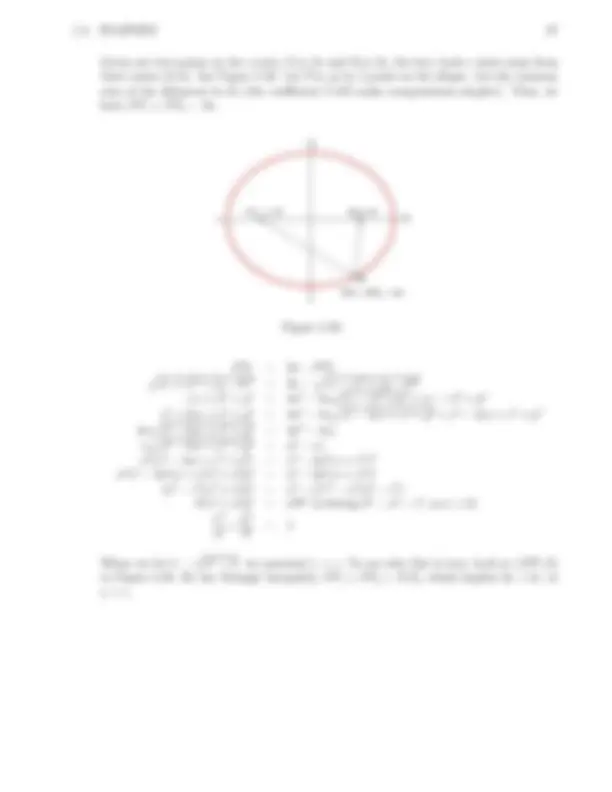
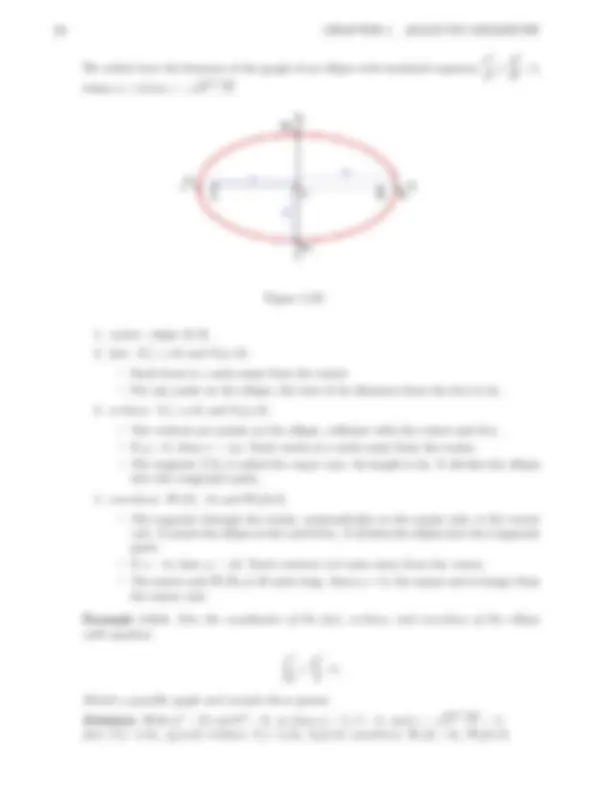
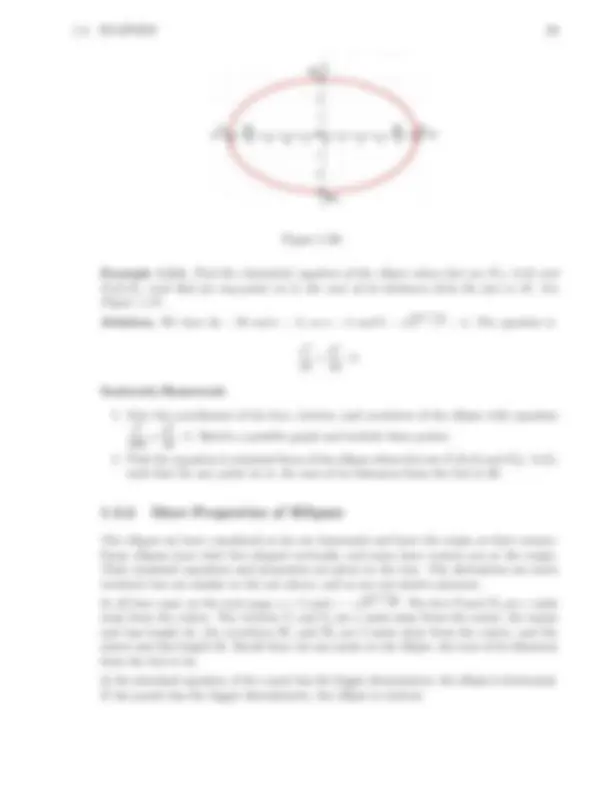
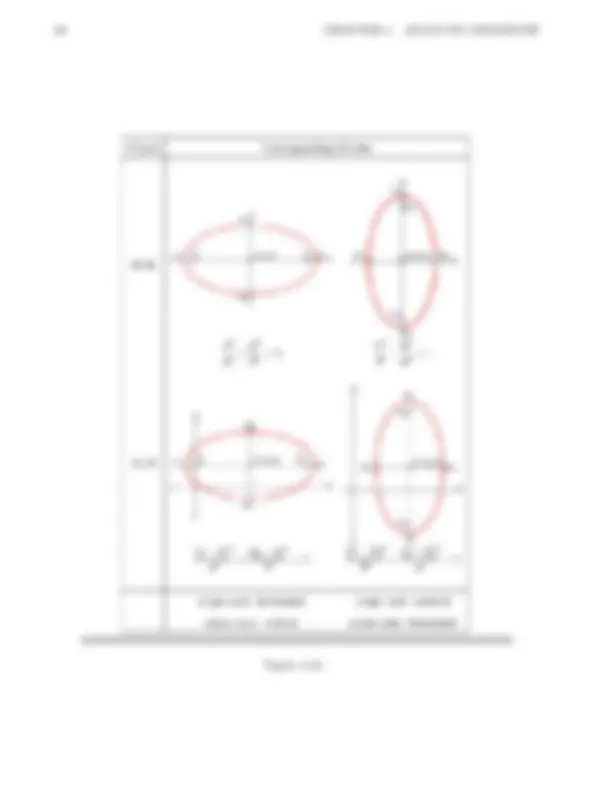
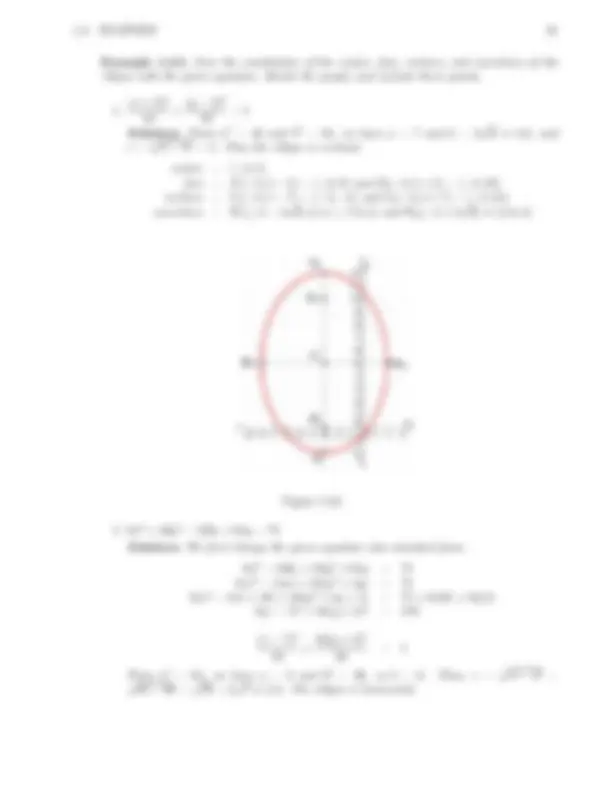
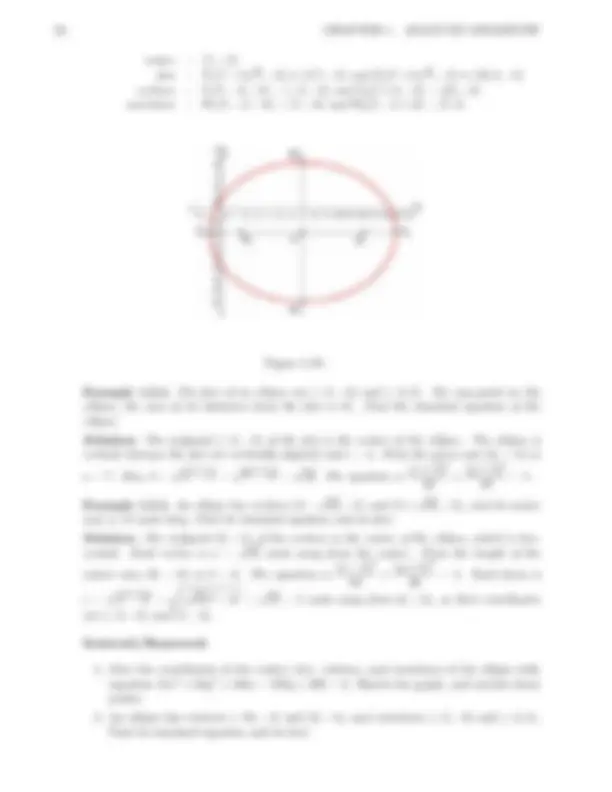
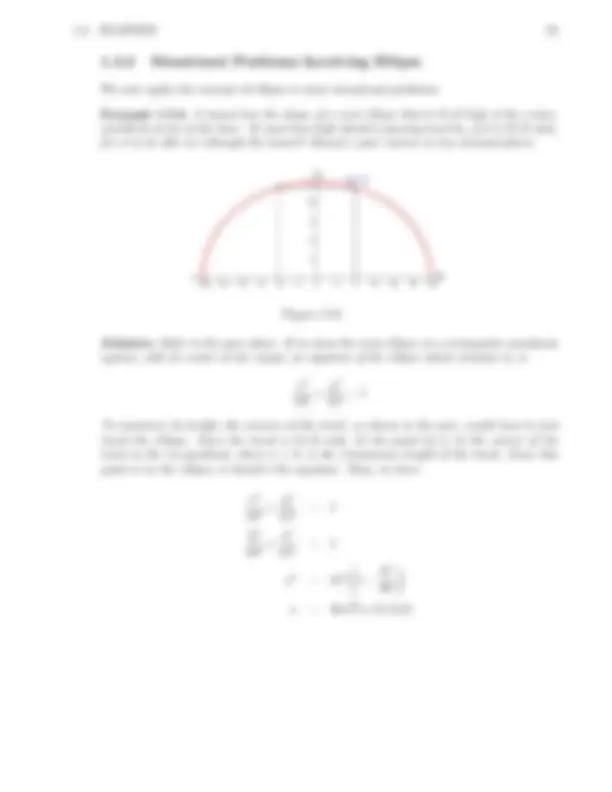

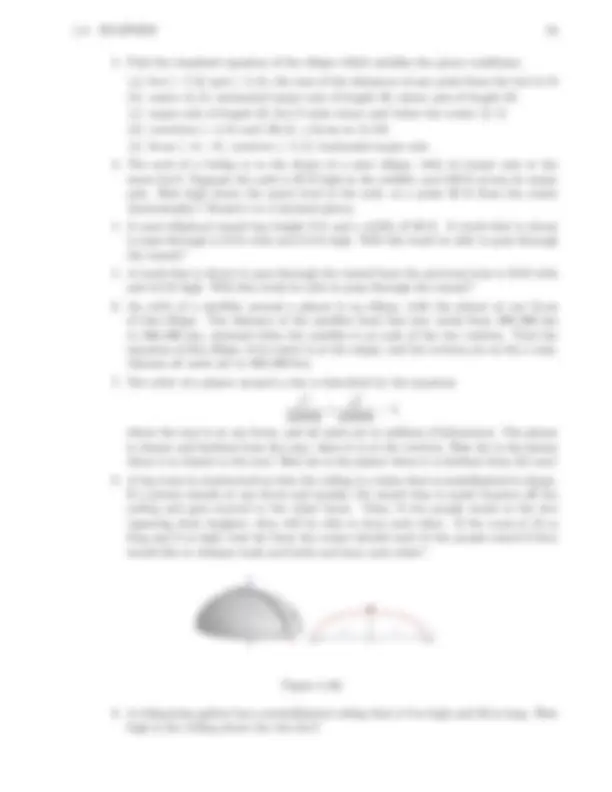


Study with the several resources on Docsity

Earn points by helping other students or get them with a premium plan


Prepare for your exams
Study with the several resources on Docsity

Earn points to download
Earn points by helping other students or get them with a premium plan
Community
Ask the community for help and clear up your study doubts
Discover the best universities in your country according to Docsity users
Free resources
Download our free guides on studying techniques, anxiety management strategies, and thesis advice from Docsity tutors
introduction to Precalculus. K12
Typology: Lecture notes
1 / 35

This page cannot be seen from the preview
Don't miss anything!




























We introduce the conic sections, a particular class of curves which sometimes appear in nature and which have applications in other fields. In this lesson, we discuss the first of their kind, circles. The other conic sections will be covered in the next lessons.
One of the first shapes we learned, a circle is a conic. When you throw a ball, the trajectory it takes is a parabola. The orbit taken by each planet around the sun is an ellipse. Properties of hyperbolas have been used in the design of certain telescopes and navigation systems. We will discuss circles in this lesson, leaving parabolas, ellipse, and hyperbola for subsequent lessons.
Definition 1.1.1. A conic section is the intersection of a plane and a right circular cone with two nappes. A line lying entirely on the cone is called a generator of the cone. The vertex of a cone is the point where all generators of the cone meet. Vertex is the only common point of the two nappes of the cone.
Definition 1.1.2. A conic is the set of solutions of a quadratic equation in two variables, an equation of the form
Ax^2 + Bxy + Cy^2 + Dx + Ey + F = 0
where A, B, C, D, E, F are all real numbers such that A, B and C are not all zero.
Different Types of Conic Section
Figure 1.4: POINT
Figure 1.5: LINE
Figure 1.6: TWO LINES
A circle may also be considered a special kind of ellipse (for the special case when the tilted plane is horizontal). For our purpose, we will distinguish between these two conics.
See Figure 1.7, with the point C(3, 1) shown. From the figure, the distance of A(− 2 , 1) form√ C is AC = 5. By the distance formula, the distance of B(6, 5) from C is BC = (6 − 3)^2 + (5 − 1)^2 = 5. There are other points P such that P C = 5. The collection of all such points which are 5 units away from C, forms a circle.
Figure 1.7: Circle with center C(3, 1)
Definition 1.1.3. Let C be a given point. The set of all points P having the same distance from C is called a circle. The point C is called the center of the circle, and the common distance its radius.
The term radius is both used to refer to a segment from the center C to a point P on the circle, and the length of this segment.
See Figure 1.8, where a circle is drawn. It has center C(h, k) and radius r > 0. A point P (x, y) is on the circle if and only if P C = r. For any such point then, its coordinates should satisfy the following.
√^ P C^ =^ r (x − h)^2 + (y − k)^2 = r (x − h)^2 + (y − k)^2 = r^2
This is the standard equation of the circle with center C(h, k) and radius r. If the center is the origin, then h = 0 and k = 0. The standard equation is then x^2 + y^2 = r^2.
Solutions:
. The radius
is then r = AC =
After expanding, the standard equation
( x −
can be rewritten as
x^2 + y^2 − 3 x − 6 y − 5 = 0
an equation of the circle in general form.
If the equation of a circle is given in the general form
Ax^2 + Ay^2 + Cx + Dy + E = 0, A 6 = 0,
or
x^2 + y^2 + Cx + Dy + E = 0
we can determine the standard form by completing the square in both variables.
Completing the square in an expression like x^2 + 14x means determining the term to be adde that will produce a perfect polynomial square. Since the coefficient of x^2 is already 1, we take half the coefficient of x and square it, and we get 49. Indeed, x^2 + 14x + 49 = (x + 7)^2 is a perfect square. To complete the square in, say 3x^2 + 18x, we factor the coefficient of x^2 from the expression: 3(x^2 + 6x), then add 9 inside. When completing a square in an equation, any extra term introduced on one side should be added to the other side.
Example 1.1.2. Identify the center and radius of the circle with the given equation in each item. Sketch its graph, and indicate the center.
Solutions: The first step is to rewrite each equation in standard form by completing the square in x and in y. From the standard equation, we can determine the center and radius.
x^2 − 6 x + y^2 = 7 x^2 − 6 x + 9 + y^2 = 7+ (x − 3)^2 + y^2 = 16
Center (3, 0), r = 4, Figure 1.
Figure 1.10: Graph of x^2 + y^2 − 6 x = 7
Figure 1.12: Graph of 16x^2 + 16y^2 + 96x − 40 y = 315
Figure 1.13:
We now consider some situational problems involving circles.
Example 1.1.3. A street with two lanes, each 10 ft wide, goes through a semicircular tunnel with radius 12 ft. How high is the tunnel at the edge of each lane? Round off to 2 decimal places.
Solution: We draw a coordinate system with origin at the middle of the higway. as shown in Figure 1.13. Because of the given radius, the tunnel’s boundary is on the circle x^2 + y^2 = 12^2. Point P is the point on the arc just above the edge of a lane, so its x-coordinate is 10. We need its y-coordinate. We than solve 102 + y^2 = 12^2 for y > 0 , giving us y = 2
11 ≡ 6. 63 ft.
Example 1.1.4. A piece of a broken plate was dug up in an archaeological site. It was put on top of a grid, as shown in Figure 1.14, with the arc of the plate passing through A(− 7 , 0), B(1, 4) and C(7, 2). Find its center, and the standard equation of the circle describing the boundary of the plate.
Figure 1.14: Graph of 16x^2 + 16y^2 + 96x − 40 y = 315
Solution: We first determine the center. It is the intersection of the perpendicular bisec- tors of AB and BC (see Figure 1.15). Recall that, in a circle, the perpendicular bisector of any
chord passes through the center. Since the midpoint M of AB is
and mAB =
, the perpendicular bisector of AB has equation y − 2 = −2(x + 3), or
equivalently, y = − 2 x − 4.
Figure 1.15: Graph of 16x^2 + 16y^2 + 96x − 40 y = 315
1.2 Parabolas
A parabola is one of the conic sections. We have already seen parabolas which open upward or downward, as graphs of quadratic functions. Here, we will see parabolas opening to the left or right. Applications of parabolas are presented at the end.
Consider the point F (0, 2) and the line having equation y = 2, as shown in Figure 1.16. What are the distances of A(4, 2) from F and from? (The latter is taken as the distance of A from Al, the point on closest to A). How about the distances of B(− 8 , 8) from F and from (from B`)?
AF = 4 and AA` = 4
BF =
(− 8 − 0)^2 + (8 − 2)^2 = 10 and BB` = 10
There are other points P such that P F = P P(where P is the closest point on line `). The collection of all such points forms a shape called a parabola.
Figure 1.16:
Definition 1.2.1. Let F be a given point, and a given line not containing F. The set of all points P such that its distances from F and from are the same, is called a parabola. The point F is its focus and the line ` its directrix.
Consider a parabola with focus F (0, c) and directrix having equation x = c. See Figure 1.17. The focus and directrix are c units above and below, respectively, the origin. Let P (x, y) be a point on the parabola so P F = P P, where Pis the point on closest to P. The point P has to be on the same side of the directrix as the focus (if P was below, it would be closer to ` than it is from F ).
x^2 + (y − c)^2 = y − (−c) = y + c x^2 + y^2 − 2 cy + c^2 = y^2 + 2cy + c^2 x^2 = 4 cy
Figure 1.17:
The vertex V is the point midway between the focus and the directrix. This equation, x^2 = 4cy, is then the standard equation of a parabola opening upward with vertex V (0, 0).
Suppose the focus is F (0, c) and the directrix is y = c. In this case, a point P on the re- sulting parabola would be below the directrix (just like the focus). Instead of opening upward, it will open downward.
Consequently, P F =
x^2 + (y + c)^2 and P P` = c − y (you may draw a version of Fig- ure 1.18 for this case). Computations similar to the one done above will lead to the equation x^2 = − 4 cy.
We collect here the features of the graph of a parabola with standard equation x^2 = 4cy orx^2 = − 4 cy, where c > 0.
Figure 1.18:
Solution: The vertex is V (0, 0) and the parabola opens downward. From 4 c = 6, c =
The focus, c =
units below the vertex, is F (0,
). The directrix,
units above the
vertex, is y =
. The axis of symmetry is x = 0
Figure 1.20:
Seatwork/Homework
The parabolas we considered so far are vertical and have their vertices at the origin. Some parabolas open instead horizontally (to the left or right), and some have vertices not at the origin. Their standard equations and properties are given in the box. The corresponding com- putations are more involved, but are similar to the one above, and so are not shown anymore.
In all four cases below, we assume that c > 0. The vertex is V (h, k), and it lies between the focus F and the directrix `. The focus F is c units away from the vertex V , and the directrix is c units away from the vertex. Recall that, for any point on the parabola, its distance from the focus is the same as its distance from the directrix.
Figure 1.21: